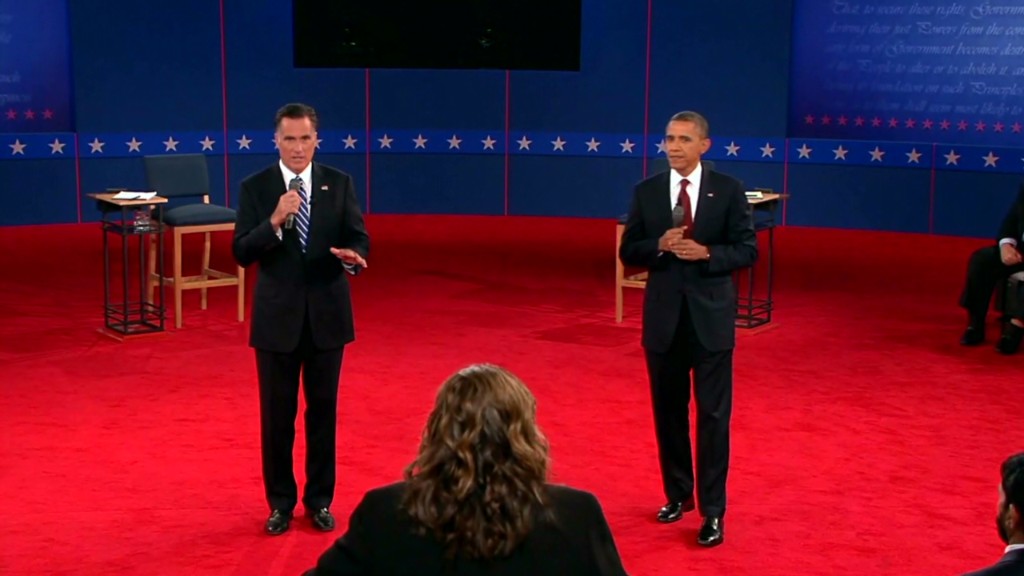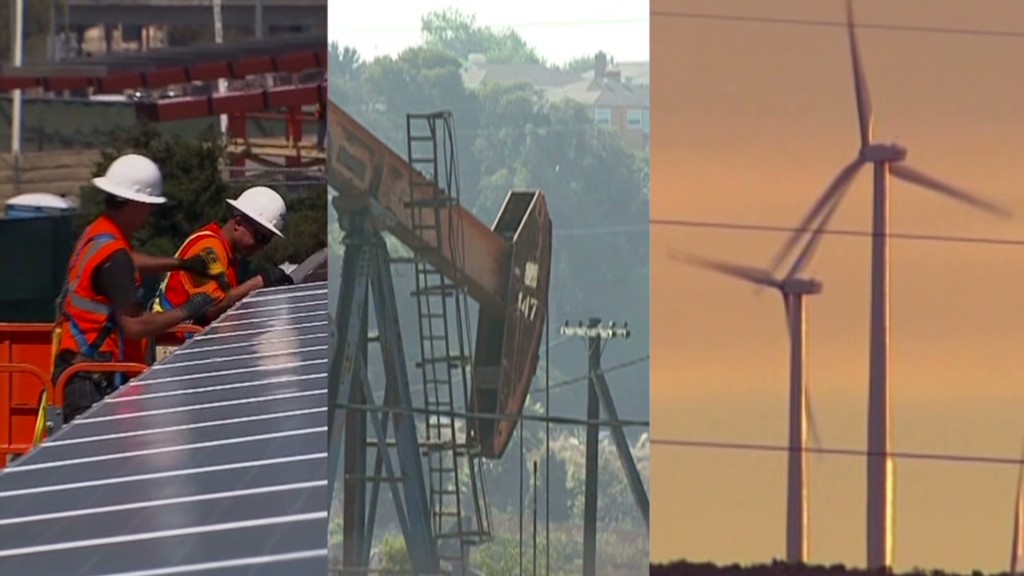
A disagreement over gas prices and energy policy produced a heated tit-for-tat argument between Mitt Romney and President Obama at the second presidential debate.
Romney suggested the president's policies have restricted energy development on federal lands. Obama disagreed. Both stuck to their political talking points.
But neither candidate really addressed the original question: Should the government -- and specifically the Department of Energy -- be working to reduce the price of gasoline?
By casting the question aside, both candidates managed to avoid making a specific promise about gasoline prices.
The truth is that politicians and the government, for the most part, have very little real control over gasoline prices.
The price Americans pay at the pump is tied to the crude oil market -- a global system largely beyond the reach of Washington.
It's certainly true that prices -- now about $3.75 a gallon on average -- have risen since President Obama took office.
When Obama took office, the country was mired in a terrible economic contraction. During recessions, demand for gasoline plummets as trucks pull off the road, companies cut back on travel and laid off workers drive fewer miles.
And since early 2009, the economy has haltingly improved, and demand for crude has risen. It has also spiked in the developing world -- especially in China, India and South America.
It's a point Obama was eager to make.

"When I took office, the price of gasoline was $1.80, $1.86. Why is that?" Obama asked. "Because the economy was on the verge of collapse, because we were about to go through the worst recession since the Great Depression."
The Strategic Petroleum Reserve is one tool the president does have at his disposal.
The SPR is located in man-made underground salt domes in Texas and Louisiana. It holds around 727 million barrels of oil. Many analysts say the reserve should only be used in case of an actual shortage of oil, not simply to lower prices.
In June, Obama tapped the stockpile and released 30 million barrels of oil from the SPR, citing a disruption in supply from Libya. The move was done in conjunction with other developed nations and ultimately put 60 million barrels of fuel on the market over the course of a month.
The decision was viewed by many analysts as a political one. And really, that's one of the few options the government has to lower prices.
While increased oil and gas drilling in the United States may create good-paying jobs, reduce reliance on foreign oil and lower the trade deficit, it would have little impact on gas and oil prices.
That's because the amount of extra oil that could be produced from more drilling in this country is tiny compared to what the country -- and the world -- consumes.
Plus, any extra oil the United States did produce would likely be quickly offset by a cut in OPEC production.
According to a 2009 study from the U.S. Energy Information Administration, drilling off the East Coast, West Coast and the west coast of Florida would yield an extra 500,000 barrels a day by 2030.
The world currently consumes 89 million barrels a day, and by then would likely be using over 100 million barrels.
After OPEC got done adjusting its production to reflect the increased American output, gas prices might drop three cents a gallon, the study said.


